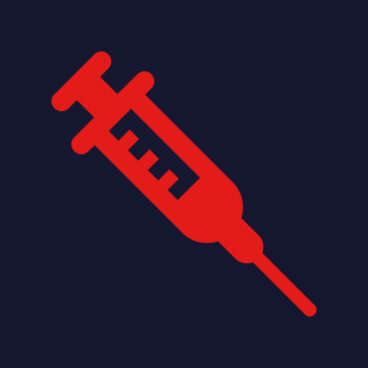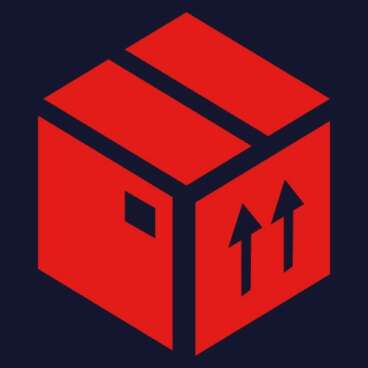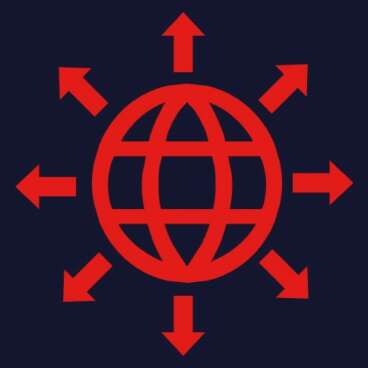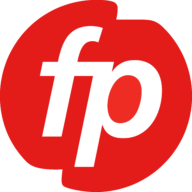
Case study • AstraZeneca
At AstraZeneca the foundations of category management are built on stakeholder engagement
By Future Purchasing |
As our Global Category Management Study has consistently revealed over the years, stakeholder and business engagement ranks high among the best practices of CPOs who are world leaders in implementing a successful category management approach.

John Dickson, CPO at multinational pharmaceutical and biotechnology company AstraZeneca (AZ), is one such advocate of this best practice.
The scope of John’s function is enterprise-wide and has responsibility for $14bn third-party spend. Having been instrumental in applying successful category management-led strategies while leading procurement at large multinationals including Diageo, Heinz, Rolls-Royce, Network Rail and GSK, he talks from a wealth of experience when he says:
“Category management is not a new concept and has its origins in the late 1980s emanating from the automotive world. Having worked in Procurement for 36 years I grew up utilising the principles of category management and still firmly believe the approach to crafting and executing strategies has to be seen as critical in establishing a best-in-class procurement function. It focuses on identification of business needs, links those needs to an external ecosystem of suppliers and enables procurement to demonstrate a more proactive, strategic outlook in bringing value in all its forms. Given the high proportion of operating costs passing through the function, procurement has a material say in the financial success of a company and a strong category management capability can often directly correlate to the key commercial performance metrics of the organisation.”
A category-driven function has supported AZ throughout its vaccine development cycle
His current company, AZ, has been an integral part of the biopharmaceutical industry’s response to the Covid-19 pandemic. Together with its partners, AZ has released for supply over 2.5 billion doses of its Covid-19 vaccine to more than 170 countries across every continent. Approximately two-thirds of doses have gone to low- and lower-middle-income countries, including more than 260 million doses delivered to 130 countries through the COVAX Facility.
The industry’s response to the Covid-19 pandemic

2.5 BILLION DOSES OF COVID 19 VACCIINE

260 MILLION DOSES DELIVERED TO 130 COUNTRIES THROUGH THE COVAX FACILITY

170 COUNTRIES IN 7 CONTINENTS
“Procurement has supported the business throughout the vaccine development cycle and as a category-based and category-driven function, we have been able to bring external insights to play to drive pace to this critical activity. The complexities of such a programme across R&D, Operations and Commercial business units have been immense and having the end-to-end co-ordination to ensure all elements of the value chain aligned was a critical driver for the function.”
“Working at pace was essential as we had to create new supply chains in order for us to meet the targets of the programme. As a result of the importance we place in category management our knowledge of the supply market enabled us to understand our options externally in establishing the right relationships and, whilst acting quickly, ensured the right level of due diligence was undertaken in assessing full risk profiles of the decisions we made. The fact that the global pandemic presented a truly common goal for us and our external partners was a differentiator to business as usual; everyone knew they had to step in line, make decisions and get engaged – and do it quickly. Category management was definitely instrumental in creating that foundation of understanding and knowledge which enabled us to put into practice a swift external supply solution to the challenge across the programme.”
Category management success requires a particular, business-focused mindset
Drawing on the experiences of the whole vaccine-creation story, John can apply learnings going forward, and pinpoints stakeholder engagement as a priority for procurement.
“Formerly, you would gather your stakeholders into a room and craft a category strategy over an intense and focused period of time – but those days are gone. It’s not easy any more to corral stakeholder groups because business priorities have changed and people are incredibly busy doing more with less. So their motivation to engage in category management has to be managed with consideration. Never more so has it been important for procurement to drive and navigate category management with a mindset grounded in that of the business rather than the mind of the procurement function.”
“Writing your category strategy so that it connects directly with the business is one of the key things I’ve seen evolve over the past few years.
It has become even more important that the limited time you get with the stakeholder community is impactful and the only way to impact those discussions is to talk their language. Procurement needs to generically understand their businesses better, and this is part of the challenge for the function across the board. Procurement needs to work towards closing that gap between being seen as a commercial function that crafts category strategies in isolation to one that is integrated and connected with the business.”
If you lack strategic insight from a category point of view, driving decisions down through the lifecycle in terms of execution won’t work. So John has worked hard to redefine the guidelines of the process. “It cannot be overly prescriptive,” he says, “because every category is different, and you have a finite amount of resource, so it’s important that the process is flexible and accommodating, otherwise you risk frustrating your stakeholders or your resources burn out – so again, it’s about getting the right balance.
“Additionally, the expectations of procurement employees has shifted with less desire to be slaves to a process. Provide the core toolkit and allow the individuals to exercise their skills and capabilities to craft the relevant strategy for the category circumstance.”
Integrating the strategic and the tactical requires strong and clear interfaces
For me,” says John, “category management is the cornerstone of procurement and has been throughout my career. As procurement evolves over the next three to five years it may change shape and morph into something slightly different, but really understanding your spend, your supplier networks, your business requirements and getting the balance right between all of that will remain critical for us. As we see the advent of more digital solutions to enhance the category management process, the engagement with partners, either internal or external, will allow the function to truly integrate the strategies and their subsequent execution in a much more transparent and aligned way.”
The way that teams use the toolkit of category management is something to constantly monitor. A strategy developed is not something you take down from the shelf and dust off every three years for a spring clean — the tools, the techniques and the thinking should be applied on an ongoing basis for category management to be successful. This is something that was very apparent in the context of meeting the requirements of the past two years with the intensely dynamic and fast changing landscape.”
A number of years ago, AZ Procurement opted to physically separate strategy development from the execution of strategy through the relocation of the sourcing and contracting teams into an offshore captive service centre hub. This was intended to have strategy established in three of the largest core markets and the execution managed out of the shared services hub. “Theoretically that was a good move for a number of reasons,” says John. “But in practice when you physically separate sourcing management from the strategic element of category management, you have introduced the dilemma of how a category manager develops the strategy whilst simultaneously engaging the people who are accountable for executing it when they no longer sit alongside. In the absence of that physical proximity it is imperative that the activities of strategy and execution are not exclusive and isolated from each other but that they interrelate or overlap with distinct and clear roles and responsibilities.”

“The accountability for authorship of the strategy needs to be clear yet the construction is not an insulated, one-person activity;
involvement and engagement during strategy development, not just of stakeholders, but of those who have the responsibility of deploying the strategy is essential.”
“There is nothing wrong with driving the strategic element of category management out of focussed, more centralised locations, but you must ensure that visibility of the markets impacted by the strategy are represented in its formation. Without proximity to the markets and the identification of needs that comes from that proximity it is difficult for a category manager to craft a strategy that is fully inclusive of those dispersed markets hence the credibility of the proposition is often undermined.”
As a result, AZ Procurement is pursuing a “network” rather than a “silo” model approach with accountability of the category clear but drawing on a blend of regional and local resources to garner business requirements. These individuals interface with the local business to gather information which is fed to the accountable category manager and then the appropriate number of strategies are formed in conjunction with a deployment plan per market or groups of markets.
The importance of being connected
“Building upon this network approach we have also established a broader engagement offering with our service centre hubs,” explains John. “We have expanded and taken a more regional approach with our global procurement services hub, so we now have hubs placed within regional time zones to facilitate the sourcing and contracting, or execution of the category strategy. This reinforces the need for proximity to the business, to harvest information from our internal stakeholders and also to plan proactively for the best means of executing the category strategy or strategies.”
“I’ve always been a centre-led fan – not a centralised fan,” he adds. “Anything that is located in one location has challenges, albeit it serves some industries better than others. But it makes it more difficult to connect procurement to the business.
The odd phone call or email is not enough, you need to be able to truly connect through a network of people regardless of how they are dispersed. And this breeds an environment where, whatever your role, creating a strategy or executing it, you are all as important as each other because your roles are intertwined.”
Category management is about broader value
The recently launched AZ Procurement Value Proposition has category management at the core. The are called elements rather than pillars or silos as they all interact with each other and rely on each other to maximise the total value brought to the company.
“If you explain your procurement lifecycle approach to internal stakeholders, it’s important to keep it simple. It’s wrong for procurement to assume that they understand, or really care about how you form your strategy, but they will be interested in the outcome of it. An occupational hazard of procurement is often to assume that stakeholders who spend money in their personal lives know how to procure in a complex corporate environment. Whilst frustrating, this is a challenge we should rise above by differentiating ourselves through articulating the breadth of value we consider in our strategies rather than being considered as a one-dimension view of value.”
“For firms that are mostly driven by cost reduction, articulating this broader value has its challenges. Contextually, the last ten years have seen little inflationary headwinds and a lot of focus for the function has been around lower unit costs and to drive competition through clearly articulated strategy and execution. The next decade may be very different and to neglect mitigation of those headwinds is dangerous for the function. In an organisation where re-investment brings true top line benefits the function’s ability to drive budget effectiveness and releasing of funds for other initiatives means the value metric differs from purely bottom line impact. Many new aspects come into play, like sustainability (an essential of all strategies) and risk management (especially post-Covid).”
But how does he make those interfaces succeed, particularly between sourcing and upfront strategy? Procurement’s value proposition is supported by category management.
In addition to a people-focused strategy that underpins their approach, John has four elements to procurement’s value proposition and they all circle back to good category management.
1
Generating financial value
This is not just reducing cost. Procurement supports an enterprise-wide business and all its enabling functions: R&D, Operations, Commercial, Legal, HR, Finance. “Needs and expectations differ depending on the business unit and its goals,” he says. “For example, in operations you may be tracking every purchase and measuring purchase price variance to improve cost of goods and drive down unit cost. But in R&D, the engine room of the business, a prime motivator is to get more for your budgets so you can reinvest that ‘saving’ or ‘added value’ back into the business. Identification of the specific value(s) that the strategy seeks to pursue is a key component of the category strategy.”
2
Optimised supplier collaboration
This is even more directly correlated to category management. A real understanding of your supplier network, and not necessarily the incumbent one, means you can see where new opportunities lie. “We should be looking to create new value chains, to explore innovative and creative ways to solve issues from capacity constraints to quality improvements, cost management to risk and sustainability solutions to serve the business and ultimately, in our case, the patients in need of our medicines,” he says.
3
Achieving Sustainable business
is broader than CO2 emissions and additionally incorporates diversity & inclusion, ethical sourcing, modern slavery as well as risk management of the supplier network. “It’s a whole new world from 20 years ago,” he says. “Regarding emissions, AZ has a truly stretching and ambitious target of being carbon zero by 2025 and carbon negative by 2023 and, accordingly, Scope 3 requires a truly strategic approach which ought to be reflected within the majority, if not all, category management strategies. With Scope 3, the need to assess the profile of our suppliers alignment (tier 1 and beyond) to the corporate ambition out to 2030 needs to be factored into our supplier collaboration discussions and consider financial value implications of the response to the AZ sustainability ambitions.”
4
Enabling business agility
This focuses on streamlining processes, systems and making the work with procurement and the externally identified and contracted sources more impactful and effective. “Removing bureaucracy should be considered into your category management strategy, along with assurance of supply the level of service effectiveness from the outcome of your strategy should be assessed when selecting a particular source.”
The importance of defining what value means
It’s important that procurement is seen to add value, but does it have the opportunity to drive top-line growth and engage with the business to stimulate revenue?
“We work very closely with finance on this,” explains John. “It’s important to define what we mean by value — in all its senses. As I have said, many firms focus primarily on the bottom line when it comes to assessing procurement performance, but that doesn’t prevent you tracking, measuring, recognising and even rewarding the broader value definitions of budget efficiency, value add and cost avoidance. You will need to have a different type of conversation with your business stakeholders depending on the precise internal audience you are talking to but being clear on how the particular aspect of value impacts that business unit will alter their perception of the broader value story you want to tell.”
“Procurement has had the challenge of sometimes engaging with reluctant stakeholders who see you as a budget stripper and they are defensive of getting you involved as a result. But in an organisation like mine, one purchase is not always comparable to a previous one, so it’s not possible to have a benchmark of how you measure a spend from one year to the next, so you need to identify what the budget holder was prepared to fund for a particular sourced activity before you can articulate a budget efficiency or budget-related saving. That contribution to budget management has value and at that point a decision to reinvest into some other initiative could well provide even greater value to the organisation or business unit.”
In summary
“Category management has evolved and the principles have stood the test of time but all too often procurement has overly focused on the tools in the toolkit, yet the tools themselves mean very little to the business and in some ways this focus has resulted in a negative perception of the function or worse, has given the impression that we do not understand the business well enough,” John believes. “Despite this, the function itself has advanced well beyond needing category management as a process differentiator, as a credibility facilitator or even a function definer. From a reputation point of view the function is much stronger now than when I started my career, thanks in part to the deployment of category management as a focal point and a way of integrating the function into the business from an operational and strategic lens — any CFO will tell you that the vast majority of the cost of running a business flows through procurement.”
“The importance of good category management for procurement will continue in my view but change, aided by technology to access data and intelligence quicker, to make it easier for stakeholders to engage with the strategy simultaneously with its creation and, importantly, to harness the skillset of a different and discerning workforce demographic with diverse expectations of working in procurement.”
“For this reason we are trying to condense our strategy down – and the use of the toolkit behind our strategy is down to the individual.”
“At AZ we employ people to bring their commercial skillsets and insights into procurement. They don’t follow rigid steps, they choose how to bring their category strategies to life for the business. What we do instil, is that category management is constantly evolving. You can never really finish your strategy, because two things will never stop changing: the business environment with its dynamic needs and requirements, and the external supply market with the advent of new vendors, technologies, risk considerations and the emergence of sustainability as a ‘must do.’ “Category management has to be seen as the cornerstone of best-in-class procurement, for all the reasons stated. But it’s not a blueprint. You have to put trust in your people and deploy the toolkit so that its output connects and engages the business.”
Related Expertise
Supplier management
Our supplier management approach combines excellent tools and techniques across the full range of activity, from segmentation, through performance measurement and improvement and through to relationship strategy development.
Category management
Excellence in Category Management gives multipliers of value delivery compared to less effective programs. Our approach, delivers a high performing team and process which provides sustainable value over years rather than months.

Future Purchasing
If you want to get more value out of your procurement spend, or you just want to know more about us, request a callback above or send us an email and we will come straight back to you.




